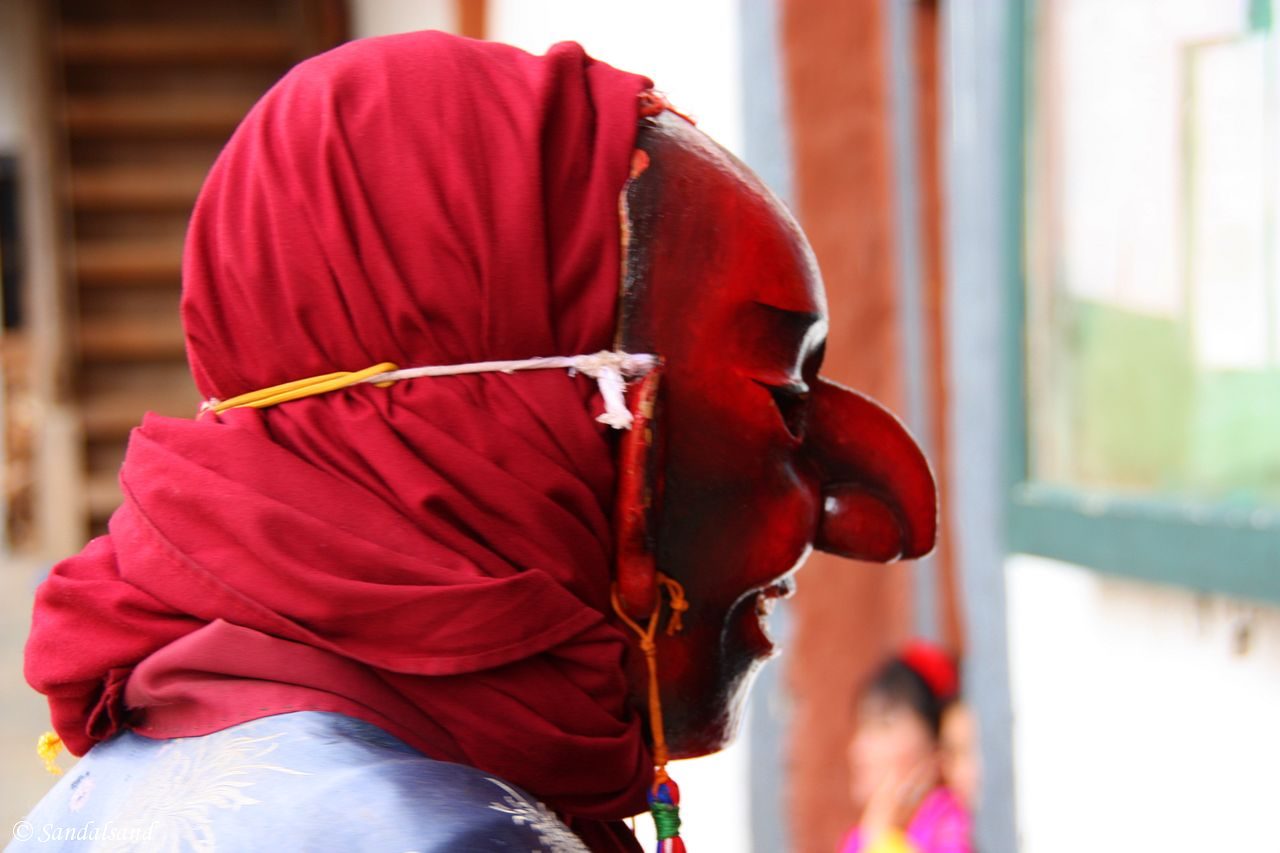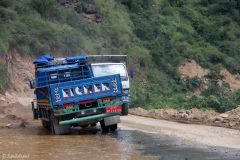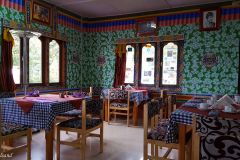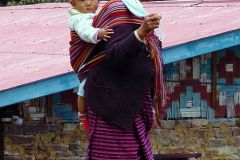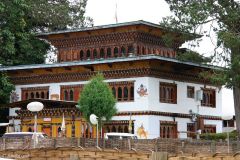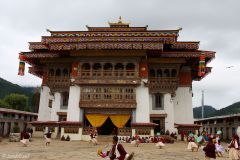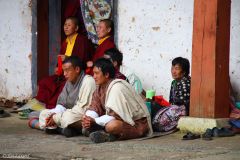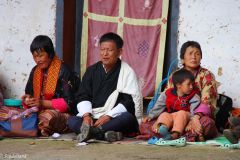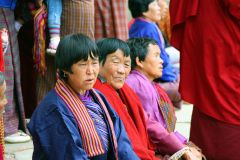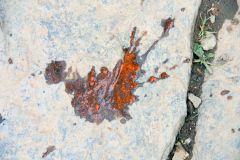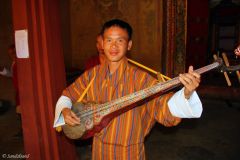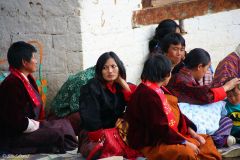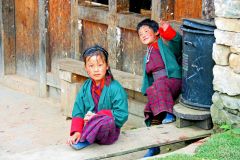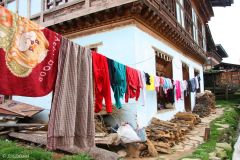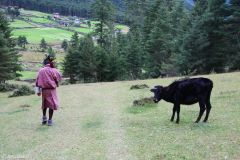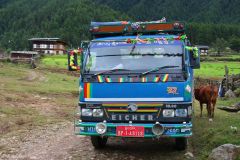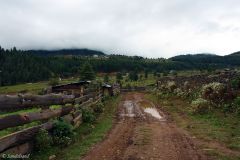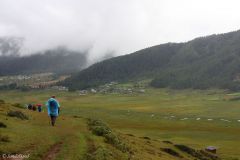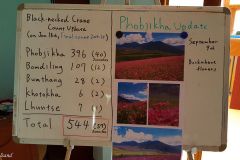The Phobjikha Valley is not at the end of a five day trek into the wilderness, although you could do that too. For me it was a rather rough car ride for five hours into a gorgeous, secluded valley. Bhutan is not a country at the centre of the world stage, and this stop on my Bhutan road trip would be to the most remote place I went on my visit.
Getting there
We started out from the Punakha Valley in the comparatively more central parts of Bhutan, drove south along the river and then turned east into the mountains. If you zoom in on the map at the bottom of this article you will get a sense of the road, and scenery, we passed. Serpentine roads up and down through the valleys and over passes, dirt roads for the most part.
We made a lunch stop at Nubding, a small place on the way up to a pass. The location was superb as the forested mountains set a fantastic backdrop, and the mist added to the atmosphere. From there we continued up to the highest point, some 3300 metres above sea level, and then the road meandered down through the forest into the Phobjikha Valley.
The Gangtey Monastery
The valley is wide, flat and open. There are trees on the hills surrounding it, giving the valley a rather unusual atmosphere compared to the usual tight valleys of Bhutan. Upon driving into it we continued straight on to the monastery, perched on a forested hill.
The monastery (goempa) was founded in 1613. Within a century or so it was extended in the form of a fortress (dzong), one of the ubiquitous structures scattered throughout Bhutan. It is shaped like a large rectangular compound with a square courtyard around which are situated the dwellings of the monks. Towards the far end from the entrance, the central tower-like structure comprises five temples.
Our arrival was blessed with the annual festival (tsechu) taking place in the courtyard. The monks were hanging from the staircases or blowing huge horns. Sitting and standing along the huge walls a number of locals were enjoying the dances performed by various troupes.
Being a foreigner unaware of the symbolism of the dances, I concentrated on people watching – and photography – in the courtyard and inside the temples.
This was a wonderful place, the performers and dances looked similar to the ones I had seen in Thimphu but the spectators were clearly of the more rural kind – adding to the authenticity of it all.
The hike
Outside the monastery there is a village and on the outskirts of it an area had been designated as the market, coinciding with the religious festival. It consisted of several stands selling all kinds of dry produce. This was for locals and I spotted no foreigners around anyway.
My guide had suggested that we could go for a hike through the valley to our hotel, and I happily agreed to that. The weather was grey and cloudy and my guide took with him a couple of umbrellas. That is not the kind of hiking gear I was accustomed to but luckily we avoided rain. Anyway, it was an easy walk first through the village, then along a dirt road past what looked like farms and then through or skirting the forest above the valley.
The bottom of the valley is quite marshy so we avoided the worst parts.
Black Necked Crane Information Centre
The Phobjikha Valley is a conservation area because of the Black necked cranes flying in from Tibet and China for the winter. This is an endangered species and a research facility and information centre has been set up. This is worth having a look into. There are large informative displays in English and also a video to watch.
What more?
Apparently this is it, in this valley. If you have a couple of more days to spend, go for more hikes and even treks into the mountains. It is a wonderful valley.
Just for the record: I stayed my night in the Dewachen Hotel and it was alright. I was happy there was no TV, less happy with no Wifi and several power outages. Overall it was a pleasant experience in what looked like a monastery, at least in terms of architecture. I can recommend the hotel, however, it doesn’t really matter. You are obliged to follow the preferences of your tour agency you travel in Bhutan. My guide and driver were put up in a dormitory building down the road.
The map below shows the places I visited and the roads I travelled during my week in Bhutan. You may expand the map into another tab or window, or zoom in and out here and now.
This series from Bhutan consists of the following chapters:
(1) Thimphu and surroundings (days 1-3)
(2) The Dochula Pass and Punakha Valley (days 3-4)
(3) The Phobjikha Valley (days 4-5)
(4) The holy Taktsang Lhakhang (Tiger’s Nest) (day 6)
(5) The city of Paro (days 5-7)
PICS – Bhutan (all images from the country in one place)

